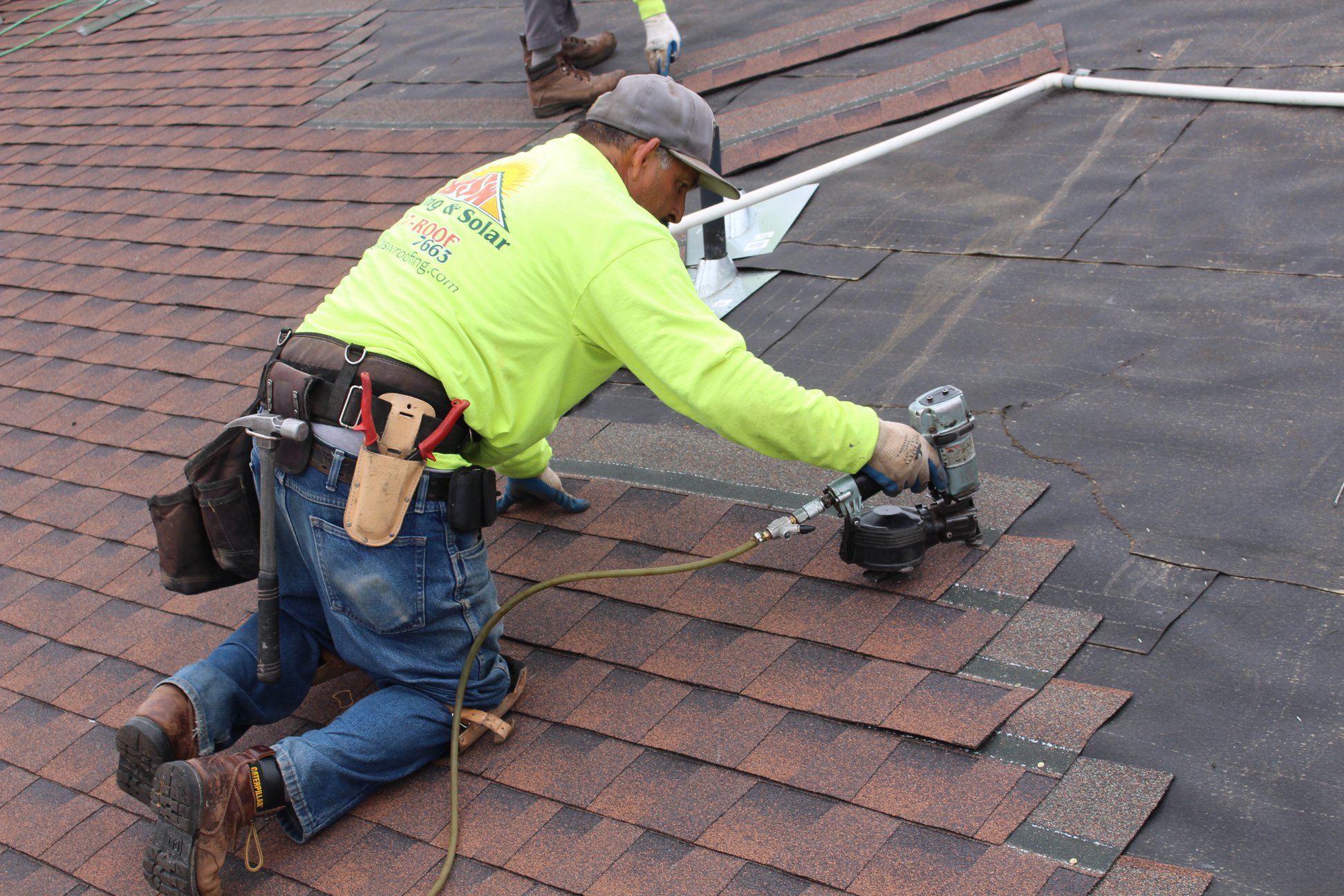Assessing the Solutions Provided by Roofing Companies in Gainesville Florida
Assessing the Solutions Provided by Roofing Companies in Gainesville Florida
Blog Article
Ideal Practices for Ensuring Proper Roof Air Flow
Guaranteeing appropriate roof ventilation is critical for the long life and effectiveness of a roof. A well balanced consumption and exhaust air vent ratio, frequently 1:300, plays a pivotal role, with consumption vents preferably put at the reduced edge of the roofing for awesome air entrance and exhaust vents at the height for warm air leave. Regular evaluations to identify clogs and maintain clear air flow are paramount. Furthermore, maintaining insulation far from vents is vital to stop airflow restriction. Understanding these fundamental elements sets the phase for more thorough understandings into installment and upkeep techniques that can significantly boost your roof's performance.
Understand Ventilation Basics
Correctly comprehending air flow essentials is important for making certain the long life and performance of roofing systems. Reliable ventilation mitigates wetness buildup and temperature extremes in the attic room, both of which can bring about considerable architectural damages over time. A well-ventilated roof covering assists in preventing common problems such as mold development, timber rot, and ice dams, which can jeopardize the stability of the roof covering materials and the underlying frameworks.
The primary objective of air flow is to assist in the motion of air, allowing for a regular exchange in between the outdoor and interior atmospheres. This equilibrium is attained with a combination of consumption and exhaust vents that function together to preserve optimal air flow. Intake vents, usually situated along the soffits or eaves, allow fresh air to go into the attic space, while exhaust vents, typically situated at or near the roof covering ridge, make it possible for hot, humid air to run away.
Secret elements affecting the performance of roof air flow include correct positioning, appropriate sizing, and ensuring that both intake and exhaust vents are unblocked. Normal examination and upkeep are crucial to recognize prospective clogs, damages, or inefficiencies in the ventilation system, thus securing the roofing system's performance and resilience.
Sorts Of Roofing System Vents
Roofing system vents play a crucial duty in preserving reliable attic room ventilation and, by expansion, the general health and wellness of the roof covering system. Numerous kinds of roof covering vents are readily available, each with distinct advantages tailored to certain roof covering needs.

Soffit vents are installed under the eaves and operate in tandem with roof vents to ensure a well balanced intake and exhaust system. By permitting cooler air to go into from below, soffit vents promote the expulsion of warm air through upper vents. Gable vents, situated on the exterior wall surfaces of the attic room, offer another effective solution, particularly in homes with gable roof coverings.
Evaluate Your Existing Air Flow

Following, take into consideration the age and problem of your roofing products and air flow components. Older systems might not adhere to present building regulations or may have deteriorated in time, minimizing look these up their effectiveness. Conduct an extensive assessment to determine any indications of deterioration, such as rust, damages, or spaces that could jeopardize the system's efficiency.
In addition, gauge the attic temperature level and humidity levels. Heats and humidity can indicate inadequate air flow - roofing companies in gainesville florida. Utilize a hygrometer and thermometer to obtain precise analyses, comparing them with outdoor conditions. Persistent discrepancies recommend possible concerns that need resolving.
Setup Best Practices
Reliable setup of roof covering ventilation systems is vital for making certain optimal efficiency and longevity. Appropriate setup starts with recognizing the certain ventilation needs of the roof and the building it covers. This includes determining the appropriate ratio of consumption to wear down vents, generally adhering to the 1:300 guideline, which stipulates one square foot of ventilation for each 300 square feet of attic room floor area.

Intake vents need to be set up at the roofing system's reduced edge, usually in the soffits, to allow awesome air to go into. Exhaust vents, on the various other hand, need to be set up near or at the roofing system's peak to promote the departure of cozy, moist air.
Seal all vent connections diligently to stop air leaks and possible water seepage. Use top quality materials and adhere to producer guidelines to make certain toughness and performance. Additionally, incorporating ridge vents with baffles can dramatically boost air flow performance by preventing wind-driven rain and snow from going into the attic.
Ultimately, precise installation of roofing air flow systems alleviates potential concerns such as mold and mildew growth, ice dams, and architectural damages, making sure the roof's integrity and the structure's total wellness.
Routine Upkeep Tips
Consistency in maintenance techniques is fundamental to ensuring the long-lasting performance of roof covering ventilation systems. Throughout these inspections, make click site certain that vents are totally free of debris, nests, and other obstructions that can impede airflow.
Cleaning up the vents is one more necessary job. Utilize a soft brush or a vacuum cleaner to eliminate dust and debris from consumption and exhaust vents. Be mindful not to damage the air vent screens or louvers during the procedure. In addition, evaluate the attic room room for any type of indications of water damage, which can jeopardize the integrity of the roof.
Appropriate insulation is just as essential. Ensure that attic room insulation does not obstruct the vents, as this can significantly restrict air movement. If any kind of insulation has actually shifted or settled, reposition or change it to keep a reliable barrier.
Finally, change any kind of harmed or missing out on elements promptly. Damaged vents, broken tiles, or worn-out blinking can all contribute to insufficient ventilation and ought to be see this addressed right away. Regular upkeep makes sure that the roof air flow system operates optimally, therefore prolonging the life expectancy of the roof covering itself.
Final Thought
Ensuring proper roof covering ventilation is extremely important for keeping the performance and resilience of a roof covering system. Adherence to the 1:300 consumption and exhaust vent proportion, paired with the strategic placement of vents, is essential.
A well balanced intake and exhaust vent proportion, commonly 1:300, plays a crucial duty, with consumption vents ideally placed at the reduced edge of the roofing for great air entrance and exhaust vents at the height for warm air departure. Consumption vents, typically located along the soffits or eaves, allow fresh air to get in the attic room space, while exhaust vents, commonly located at or near the roof covering ridge, allow hot, damp air to leave.
Soffit vents are installed under the eaves and job in tandem with roof vents to guarantee a balanced intake and exhaust system. By enabling cooler air to enter from below, soffit vents facilitate the expulsion of warm air through top vents. Adherence to the 1:300 intake and exhaust vent proportion, combined with the critical positioning of vents, is necessary.
Report this page